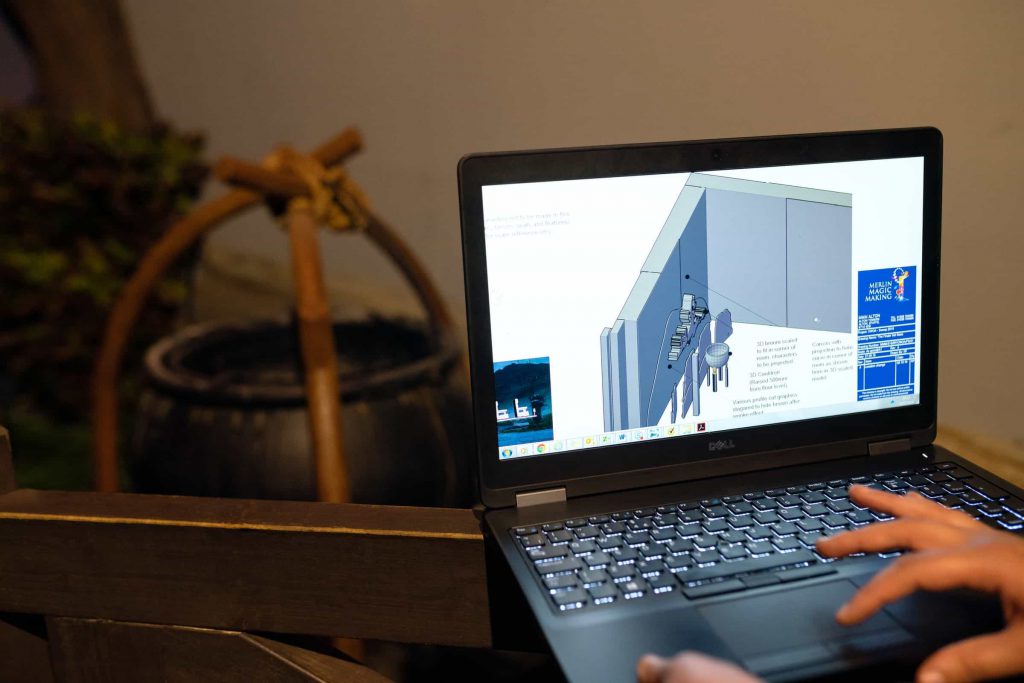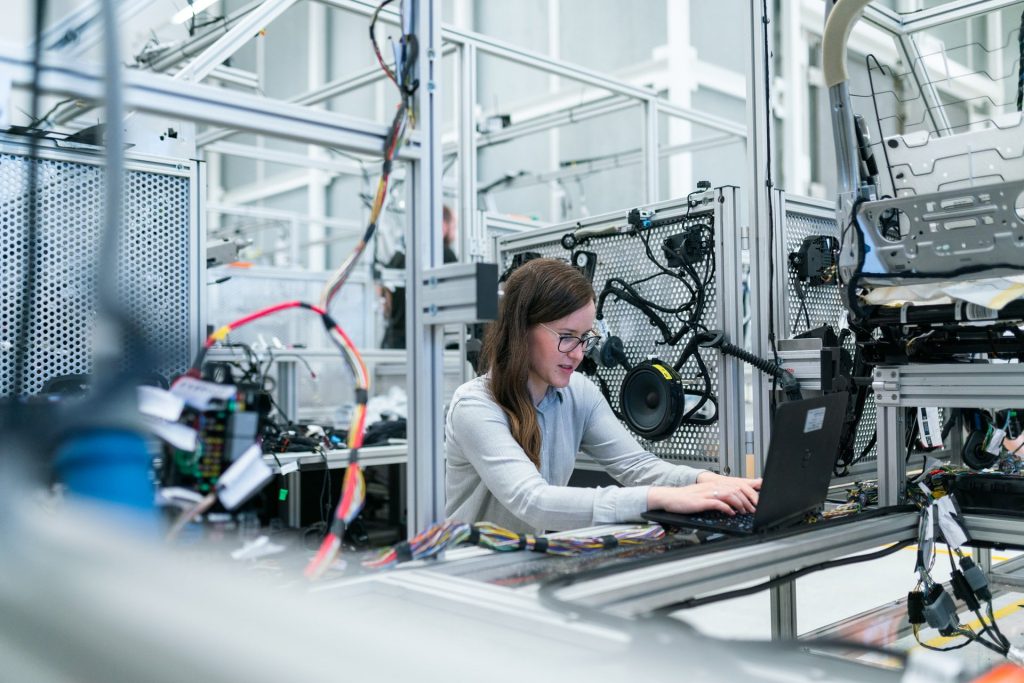Thanks to the Internet of Things and Industry 4.0, the industrial space is evolving at a fast rate. Every day, new and improved software is gaining momentum.
The developments are fueled by mass customization. Consumers want personalized products, and manufacturers must look for cheaper ways of production so that they can meet the market demands. Industries have been forced to relocate to places where they will find low labor rates, less taxation, and sustainable transport systems. Now that machines and factories are becoming smarter by the day, sharing of information has stepped up, and industries are transforming their supply chains.
Artificial intelligence should be employed to avail the suitable machine learning models to achieve the model of an ideal smart factory.
Within a network of smart industries, machines, and software communicate. Therefore, software providers, machine builders, and automation experts should collaborate when building the components of the factory.
The History of Machine Communication

It is not the first time we are experiencing machines “talking” to the software. Sheet metal factory participants have combined the aspect of smart devices into many scenarios, such as in automated lines. An example is when a machine that is stacking sheets of metal forwards the cut parts into a blender. In these instances, the machine should have communicated when it was ready to move to the next operation. The companies would run the shifts at night because the machinery would work unattended. The automation system utilized a validation software system to manage all the machines involved. The systems could detect when a device had completed its work and was ready to handle the next process.
Conventional protocols like OPC UA and MTConnect handle issues involving access to data and security of the information. However, they cannot solve the problem of semantics. Irrespective of these developments, it is challenging and often impossible for the systems to relay information. Different machines from their respective manufacturers or even from the same source might speak varying languages.
At times the machinery is outdated, so it uses old communication channels. Connecting an old machine to a new model is costly and challenging, while the charges of upgrading to modern equipment are unreasonable. Companies that wish to proceed with digitization should ensure that their equipment is up-to-date and matches the current communication levels.
We also had the Universal Machine Tool Interface initiative, which was launched in 2018. The effort joined hands with a German machine tool manufacturer to enhance the speed in machine integration. Before the initiative, integration could only be attained through personalized projects that involve high costs and lengthy implementation periods. With this initiative, all machines will communicate using a similar language.
The Universal Machine Tool Interface depends on OPC UA to handle common connectivity issues like security, data transfer methods, and data access. It opens the possibility of solving challenges in the IT/IIoT merger, which is critical to the success of creating a smart factory.
The merging techniques enable machinery to communicate current production status to the rest of the network. All the operator needs to do is to prepare the schedule on the machine. All the commands like start, end, or pause will be relayed to relating systems. The mechanisms can be installed in a traditional device that will be connected to a cyber-physical element that communicates to the relative software like manufacturing execution systems, resource planning, and other systems that control the manufacturing processes.
When these mechanisms have been fully developed, they will aid in systems that can monitor machine status adequately. For instance, they will show critical processes in real-time, such as equipment effectiveness and loading capability. They will also survey the current load capacity and give a quotation based on availability and machine status.
The efficiency of machine communication will increase when they are integrated with software that works with the Internet of Things, security, advanced sensors, and other systems. The innovation will offer new opportunities for both cellular and machine automation. Modern machinery can incorporate software that will allow them to communicate with other applications and systems in a sophisticated manner, both on the cloud and locally.
The connection between the cloud and the local space is essential. Thankfully, this is already possible because of the latest mobile technologies like 5G. The new standards in communication will give the cloud a suitable environment for storing, managing, and processing data. Information on these systems can be accessed at any time and from any gadget securely.
Customers and suppliers will benefit from this improved communication systems because the value chain will move more efficiently and will reveal opportunities that weren’t tapped previously. The industry is shifting from efficient machinery to effective ones, and the new software will take them to a whole new level.
The Importance of Data Security in Digitization
Connecting a factory to the Internet of Things platform has undeniable benefits. However, it is also risky in that it could reveal hidden aspects in the form of cybersecurity threats. For efficient production and confidentiality, intelligent machines must be kept secure. Local and cloud-based software collaborate in smart factories, which means that the industry will require effective security technologies.
The functions that must be secured include data retention, flexibility, and transfer. When you put the right security measures in steel buildings, cloud computing becomes a great option.
The Manufacturing Intelligence

Many machine tools rely on external software. They cannot function until they receive data from a CNC program. The external software computes the tasks that this machinery should execute and when they should undertake them. The machines then relay status information to external software as people monitor the operation of the machine or through supervising control and information acquisition.
Now that we are moving to the idea of smart industries, the old system must change. The automation required should be controlled through intelligence that can’t be handled by the old methods. The “brain” should be capable of monitoring every element of production from raw material entry to planning and implementation.
The functional organization of sheet metal industries will change. For them to handle the dynamic environment of planning, engineering, and operations will interact more than before because the process will now be automated.
The manufacturing brain will bring considerable changes to many things in the sheet metal factory, and consequently to steel buildings. Computer-aided manufacturing will ensure seamless processes that minimize manufacturing time and reduce wastage. It will also ensure that smart industries produce high-quality goods. That is unlike what happens today because the current methods of maximizing margins for the orders are inefficient. Today we need a skilled programmer to make the best nest, choose the best cutting method, and optimize material use.
The idea of smart factories will challenge the role of production engineers. It might also bring down the relationship between machines and CAM. Software and machines have to perform repetitive duties that people can also do. They require a few manufacturing parameters, like the number of parts, thickness, geometry, quality, and materials. The machinery may use this information to generate the right processing and testing methods. AI and machine learning are required for this to be successful, but there are some exceptions to this. The skills of a production engineer will be crucial for smart industries to work.
Smart industries will also change MESs because the automated system can respond to the absence of material, machine failure, or changes in order priorities. When MESs incorporates intelligence in their work, they will determine the right time to perform a task, the ideal order of performance, and the best routing. They can also assess customer needs, the required date of delivery, material accessibility, and the necessary adjustments that the system should make.
The Cloud’s Potential
Thanks to artificial intelligence, the manufacturing brain will choose the best plant, the most appropriate machinery, and the ideal routing. Therefore, the nature of artificial intelligence makes the cloud indispensable the cloud has led to optimal computing capacity that up to date has seemed unattainable.
Some people feel that MES can only be found in a plant. However, we must ask this question, “Is it possible to plan for production in the cloud only and leave the performance part to the individual plants?” we must answer these questions before we opt for smart technologies.
All the same, we cannot deny the cloud’s potential. The MESs that is based on the cloud makes way for a fantastic manufacturing system that uses high levels of computation capacity. The trends can handle several plants effectively. For instance, you can decide to direct a portion of the production to one factory or another according to the information you receive from every plant. The MES in each part will determine production offers and general programming. In all this, 5G will have an essential role in managing large data flow between the cloud and the plants.
Smart Factories Require Effective Collaboration

The future promises a machine that will make decisions independently. It will perform duties based on information from several interlinked systems and its status. The interaction of the device with CAM and MES will determine the success of the automation processes. People may have to intervene to handle exceptional cases.
Fabricators will design powerful machines that have inbuilt software to control the machinery and the cloud. Intelligent systems will use logic and data to determine the flow of production units. The information must exchange between machines, plants, and other factories. It will be like the machinery are dancing in synchrony with the mechanisms in different factories.
Machines started “talking” decades ago, and they are still learning more languages and vocabulary. Now that software and devices are integrating, they will require top-notch architecture based on protocols that promote real-time operations. Over and above, machine tool builders, system integrators, and software developers need to collaborate. When these people work together, they will release incredible concepts that have never been experienced. Eventually, we will re-define the sheet metal industry.
Elements of a smart factory
1. Automation
The industry should improve machine and decision-making performance. This entails mechanical devices that will optimize tools to perform their required duties. The aspect will include automated quotations, planning, ordering, and other activities. In the end, human involvement will be minimized in several functions, like machine utilization and regular decision making.
2. Intelligent machines
Machines will send information through software systems that will be placed all over the factory. They will communicate when they need repair and the process they are undertaking at the time. Intelligent machinery will make some decisions rather than receiving commands from external forces. They can also request some information needed to complete a task.
3. Digitization
The manufacturers, suppliers, and consumers communicate both in the cloud and through traditional methods. In-built intelligence makes decision-making processes more manageable. Therefore, they can organize for the production, supply, and delivery of products in an efficient channel.
4. Provisioning
For successful planning of production, materials should be made available where and when they are required. The supplier should understand products specification, manufacturing capacity, raw materials, and delivery methods. When factories have what they need on time, they can deliver the desired quality at a reasonable cost.
5. Dispatch
A factory should manage manufacturing resources to attain on-time delivery. Some companies have several plants, some of which are in different locations. The system should be coordinated across the manufacturing sites to make sure that they deliver the right resources on time.
Original article can be found on thefabricator.com




